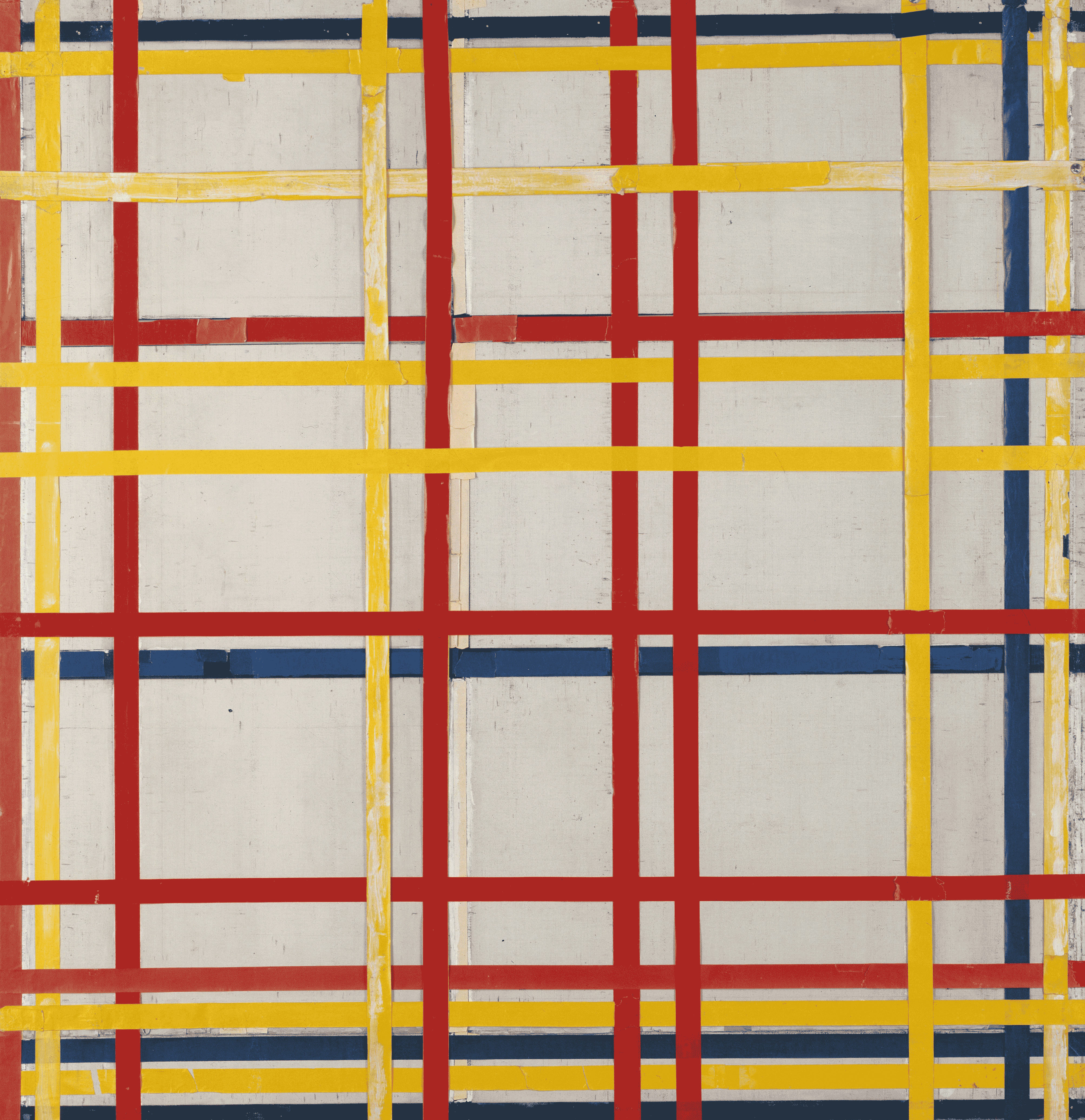Has This Piet Mondrian Painting Been Hanging Upside Down for 77 Years?
Intriguing new observations suggest that it has—but curators are going to leave it the way it is

Straight lines in bright red, yellow, blue and black cut through a white canvas, forming a complex grid pattern that represents a skyline. This is one of Dutch artist Piet Mondrian’s famous abstract pieces, titled New York City I—and it may have been hanging upside down in museums since 1945, a year after the painter’s death.
The discovery began with Italian artist Francesco Visalli, who sent an email to a German museum, Kunstsammlung Nordrhein-Westfalen, last year: “Whenever I look at this work, I always have the distinct feeling that it needs to be rotated 180 degrees,” he wrote, per the New York Times’ Julia Jacobs. “I realize that for decades it has been observed and published with the same orientation, yet this feeling remains pressing.”
Curator Susanne Meyer-Büser agreed. She revealed the intriguing new discovery at a press conference last week announcing a new exhibition at the museum, “Mondrian: Evolution,” which marks 150 years since the painter’s birth.
“Was it a mistake when someone removed the work from its box? Was someone being sloppy when the work was in transit?” Meyer-Büser says to the Guardian’s Philip Oltermann. “It’s impossible to say.”
While many questions remain, we do have a few clues: A photo of the artist’s studio published in a 1944 issue of Town & Country shows the painting still on its easel, rotated 180 degrees from the way it has been hanging ever since. Mondrian considered the work incomplete and didn’t sign it, which meant that curators weren’t able to use a signature to orient the painting. And in another Mondrian painting—New York City, which is very similar to New York City I—the grid lines thicken at the top of the piece, rather than at the bottom.
Meyer-Büser thinks the thickening lines are meant to invoke nighttime above New York City. “The thickening of the grid should be at the top, like a dark sky,” she tells the Guardian. “Once I pointed it out to the other curators, we realized it was very obvious. I am 100 percent certain the picture is the wrong way around.”
/https://tf-cmsv2-smithsonianmag-media.s3.amazonaws.com/filer_public/62/75/62759e69-20ac-44e1-9724-aa9db9f57c1d/gettyimages-78411649.jpg)
Still, not all art historians agree about the piece’s orientation. “[The painting was] still in process,” Harry Cooper, a curator at the National Gallery of Art who has helped organize other Mondrian exhibitions, tells the Times. “Even though it might have been put on an easel at some point, that doesn’t mean it wouldn’t have been worked on further. A different decision about its orientation could have been made.”
Now, knowing what we do, will New York City I finally be flipped? Actually, curators are going to leave the artwork the way it is.
“The adhesive tapes are already extremely loose and hanging by a thread,” says Meyer-Büser. “If you were to turn it upside down now, gravity would pull it into another direction.”
Besides, she adds, “it’s now part of the work’s story.”
“Mondrian: Evolution” is on view at the Kunstsammlung Nordrhein-Westfalen in Düsseldorf, Germany, through February 12, 2023.
/https://tf-cmsv2-smithsonianmag-media.s3.amazonaws.com/accounts/headshot/Molly_Enking.png)
/https://tf-cmsv2-smithsonianmag-media.s3.amazonaws.com/accounts/headshot/Molly_Enking.png)